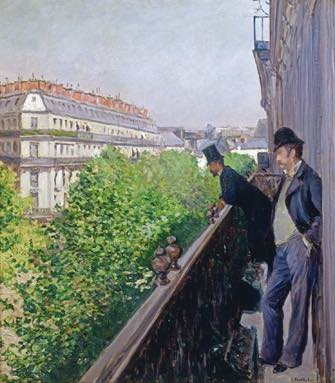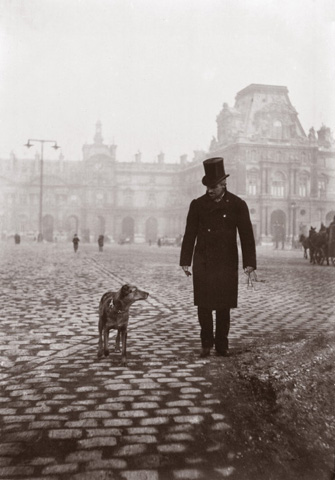
Gustave Caillebotte is well known as an Impressionist painter, but who knew that he had a brother named Martial who was a talented and passionate photographer? Working not together but in parallel, the two brothers enjoyed documenting life in the new post-Haussmannian Paris, where they both lived, and in the Paris suburbs, where they had country homes.
The new exhibition at the Musée Jacquemart-André, “Dans l’Intimité des Frères Caillebotte: Peintre et Photographe,” gives the definite impression that the brothers led charmed lives. Born into a wealthy family, neither had to bother with a day job to make a living, but both had multiple interests and pursued them seriously.
Trained as a lawyer, Gustave later took up painting and studied with Léon Bonnat, while Martial, who was also a composer, proved to be a photographer who was full of curiosity and obsessed with documenting daily life, often using his own family – wife Marie, two children and various relatives – as models, sometimes reluctantly, judging by the occasional stony looks on their faces as their patience seems to be wearing thin – “What, another one?” they sometimes seem to be saying. Most of his shots, however, look amazingly natural and full of action, considering the stiffness of most photos of the time, when subjects had to keep still to avoid blurring; one wonders how he did it.
 |
We see the family in every possible domestic situation: the whole family at the dinner table or picnicking in a field; the women reading, sewing or playing the piano; the children gamboling in the garden; the servants eating in the kitchen; the mother putting the children to bed. There is even a rather hilarious photo of Marie sitting in the bathtub, with water up to her neck concealing everything but her head. She does not look happy.
Gustave, who was a friend of both Renoir and Monet, painted many of the same subjects as his brother in colorful, light-filled canvases, many of them depicting urban scenes as seen from the balcony of his Haussmannian building. Like his brother with the camera, he tried to freeze moments in time: in the not-very-Impressionistic “Le Déjeuner” (1876), for example, a servant is caught in the act of setting down a plate in front of a woman at the head of the table, while the man on the right attacks his meal ferociously with knife and fork. The attention to detail, especially the reflections on the glasswork, is worthy of a Flemish master.
The exhibition groups the works of the two brothers, who were close in life as in their work, by theme, showing how much their sensibilities had in common. Both were interested in modern technology and yachting – Gustave not only loved to paint boats in sail but also designed and built them (he was also an engineer). A great supporter of his fellow painters, Gustave was also responsible for finally getting the reluctant French establishment to show the work of the Impressionists in national museums, by leaving to the state a collection of works by the likes of Cézanne, Monet, Manet, Degas and Pissarro with the stipulation that they be put on display.
The operative word for this show is charm. Full of light, color, activity and joie de vivre, it lets you forget the dark side of life for a while.
Musée Jacquemart-André: 158, boulevard Haussmann, 75008 Paris. Métro: Saint-Augustin, Miromesnil or Saint-Philippe du Roule. RER: Charles de Gaulle-Étoile. Tel.: 01 45 62 11 59. Open daily, 10 a.m.-6 p.m. (until 9:30pm on Monday). Admission: €10. Through July 11, 2011. www.musee-jacquemart-andre.com
Parc Caillebotte: 8, rue de Concy, 91330 Yerres. RER D: Yerres. Tel.: 01 69 48 93 93. Open April 1-May 30: 9am-8:30pm: June 1-July 31, 9am-9pm; August 1-September 30, 9am-8pm. bit.ly/g8FX4H
Reader Janette Parr writes: “I saw this wonderful exhibition yesterday, and the article here says it all. It is very popular, and the only slight drawback was that the layout didn’t allow for easy circulation of visitors in rather small rooms. Highly recommended – but go earlier in the day if possible.”
© 2011 Paris Update
